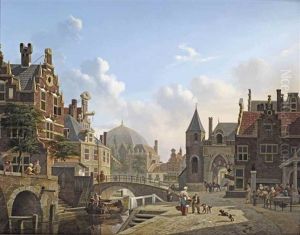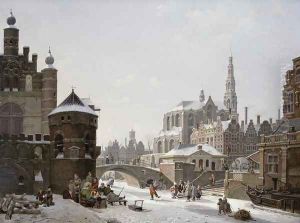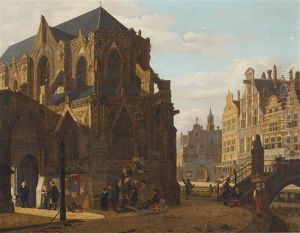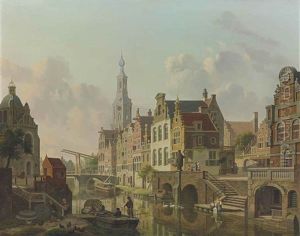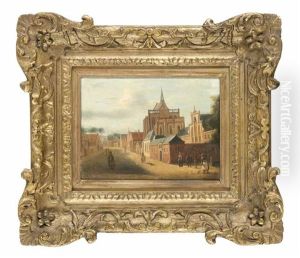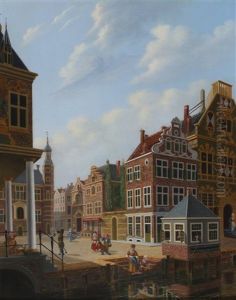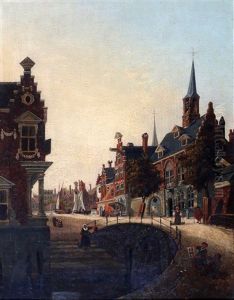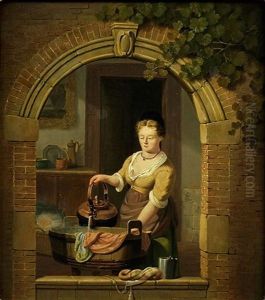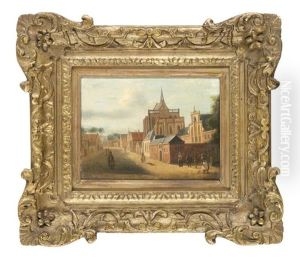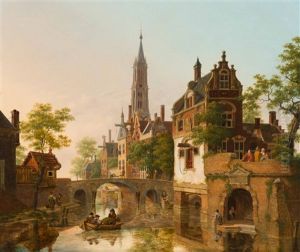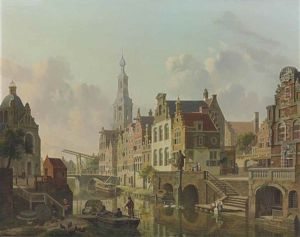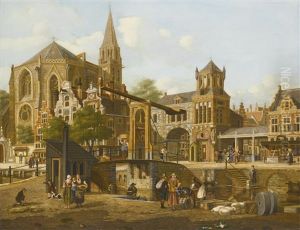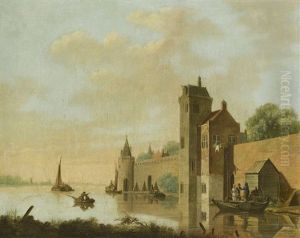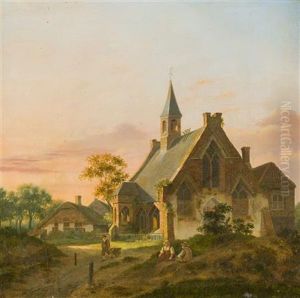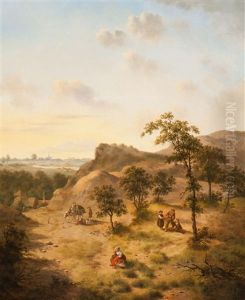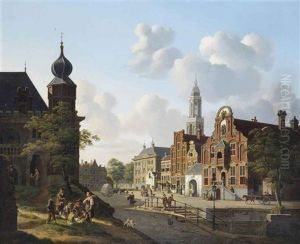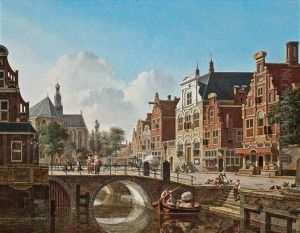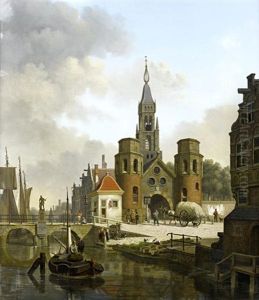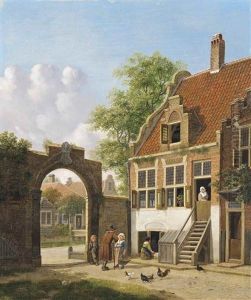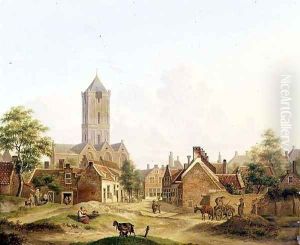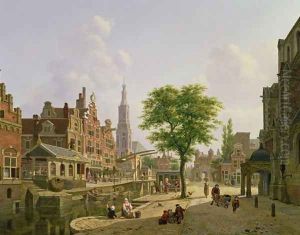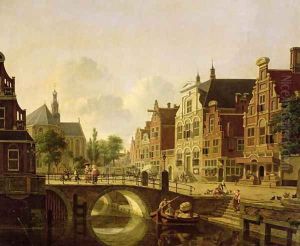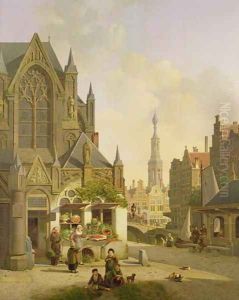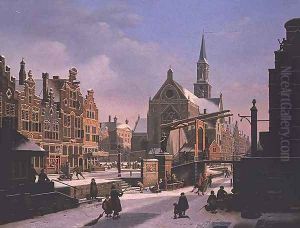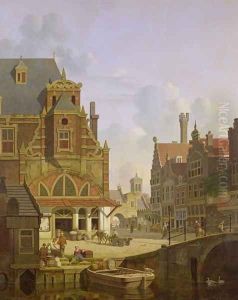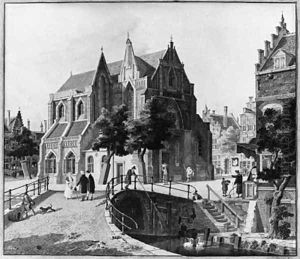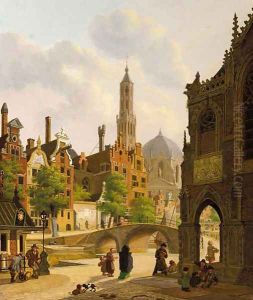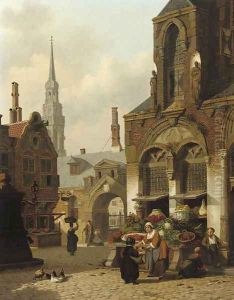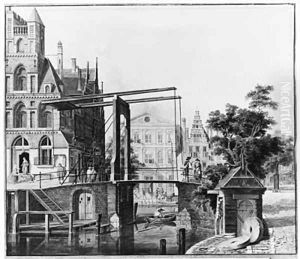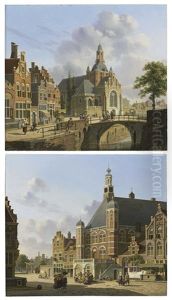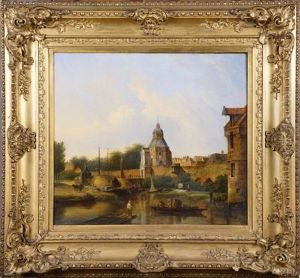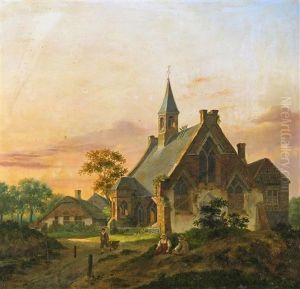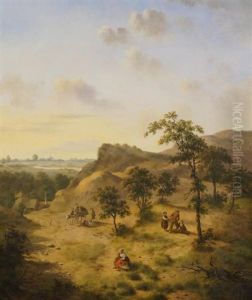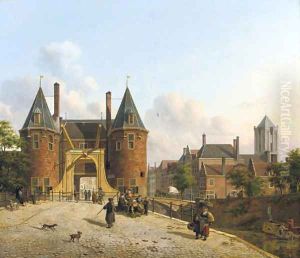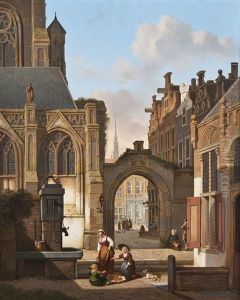Jan Hendrik Verheyen Paintings
Jan Hendrik Verheyen was a Dutch painter, known primarily for his work as a townscape artist in the 19th century. Born on January 11, 1778, in Utrecht, Netherlands, Verheyen developed an interest in art at an early age. He was trained by the Dutch painter Jan Willem Pieneman, who was well-regarded for his portraits and historical paintings.
Verheyen's focus, however, was on cityscapes, and he became particularly adept at capturing the architectural beauty of Dutch towns. His paintings typically feature realistic depictions of urban settings, often with an emphasis on the play of light and shadow. Verheyen's attention to detail and his ability to render atmospheric effects were highly appreciated during his lifetime.
Throughout his career, Verheyen traveled across the Netherlands, painting the cities and their environs. His works serve as valuable historical records of the urban landscape of the Netherlands in the 19th century. He exhibited his work in various venues, including the Amsterdam Royal Palace, and earned the patronage of several important clients.
Jan Hendrik Verheyen's paintings are now considered important pieces of Dutch cultural heritage. They can be found in museums and private collections both within the Netherlands and internationally. Verheyen passed away on December 12, 1846, in Utrecht. His legacy lives on through his contributions to the field of townscape painting, and he is remembered as an artist who meticulously documented the urban charm of Dutch cities during his era.
